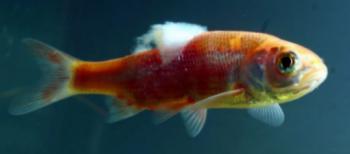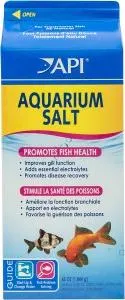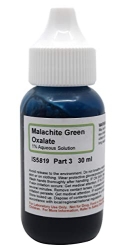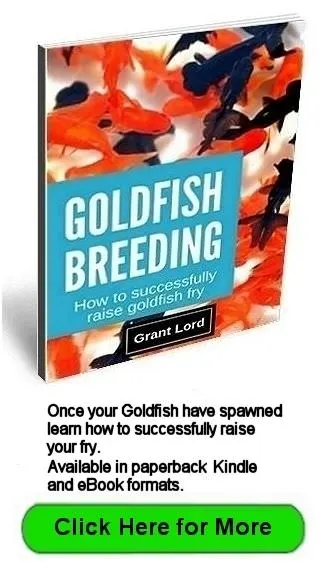- Home
- Disease Causes
- Common Goldfish Diseases
- Goldfish Fungus Disease
Goldfish Fungus Disease Treatments
Fungus spores are always present in water exposed to air.
Goldfish fungus disease comes in two forms, the more commonly seen skin form, and the much more dangerous gill form.
Saprolegnia (skin) Fungal Disease
 Fungus disease on the back of a young Goldfish
Fungus disease on the back of a young GoldfishSaprolegnia fungus disease, also known as cotton wool disease is one of the more common goldfish diseases. Fungus doesn’t affect healthy fish. If a fish has sustained an injury, this can give fungus the opportunity to invade the area.
Prolonged low water temperatures may make fish prone to fungus attack as it often occurs in early spring, late autumn, and winter.
Fungus can also be a symptom of parasites as fungus spores are able to penetrate damaged skin or gill membranes. If parasites are present, usually flukes or a protozoan parasite such as Costia, the fish needs to be treated for these at the same time as the fungus.
A fish that has a weak immune system due to a poor environment will also contract fungus.
Fungus appears as patches of grey/white cotton wool on the body or fins. If it is left untreated it will spread from the skin into the muscle tissue and the fish will eventually die.
Branchiomyces (Gill) Fungal Disease
Branchiomyces
is an aggressive fungus that kills fish by destroying gill
tissue. The affected areas die and slough off leaving gaping
holes in the gill membrane. Eventually the fish suffocates.
To flourish Branchiomyces requires high water temperatures, high levels of waste in the water, high nitrate levels, and overcrowded conditions.
Summer is the usual
time for this fungus type to appear because of higher water temperatures
and more frequent feeding.
Goldfish Fungus Disease Treatment Options
There are several treatments that can be used for Saprolegnia. The Goldfish should already be in a mild salt bath:
- Aquarium salt. The strength needed is high, 3 tablespoons per gallon (10 grams per liter). This is about 1/3rd the strength of sea water. A weak fish won’t be able to take this amount of salt unless it is added very gradually. If it starts to lose balance and lay on its side, remove it and give it time to recover. Use half the amount of salt and try again.
- Methylene Blue. This is my preferred method of treatment. A combination of an Aquarium salt bath with Methylene Blue added.
- Malachite-Green. Bathe the fish in a solution of one part malachite green to five hundred thousand (500,000) parts water for two hours or less then put the fish into a mild salt bath, or, follow the manufacturer's instructions on the container. Malachite green is harmful if too much is used and/or if the fish is too weak from the disease. Use with caution!
- Copper sulphate. Bathe the fish in a solution of one part sulphate to two million ( 2,000,000) parts water for one to two minutes.
- Potassium Permanganate. Put in one grain per ten gallons of water.
- Methylene Blue. Swab the affected area with a solution of 5% Methylene Blue if the fungus is localized or use as a bath.
Some of the chemicals mentioned above are fairly toxic.
I gradually increase the Aquarium salt content to 0.3% over a 24 hour period (3-4 grams per liter or 1 tablespoon per US gallon). I then add Methylene Blue until the water is medium blue. Goldfish can tolerate quite high doses of these chemicals safely. The cure is slower but safer.
Depending on water temperature and medication level, it can take a week or more before the fungus drops off the affected area.
Feed live foods if available to speed up recovery.
Keep the fish in the sickbay until all traces of fungus have disappeared and the affected area has started to heal.
For Branchiomyces use 2 milliliters of methanol free formalin per 10 US gallons (50PPM). Dose the fish for exactly 2 hours, then do a 75% water change. Observe the fish closely during this period. If it starts gasping at the surface stop treatment immediately.
After it has recovered, or if you have any doubts, use half the dose.
After treatment gradually add Aquarium salt to make a 0.3% salt bath and leave the fish in this until it is active and eating.
Warning: Formalin takes oxygen from the water, so don't use it in water above 80oF (27oC), and provide aeration in the sickbay during treatment.
Top of Goldfish Fungus Disease Treatment page







